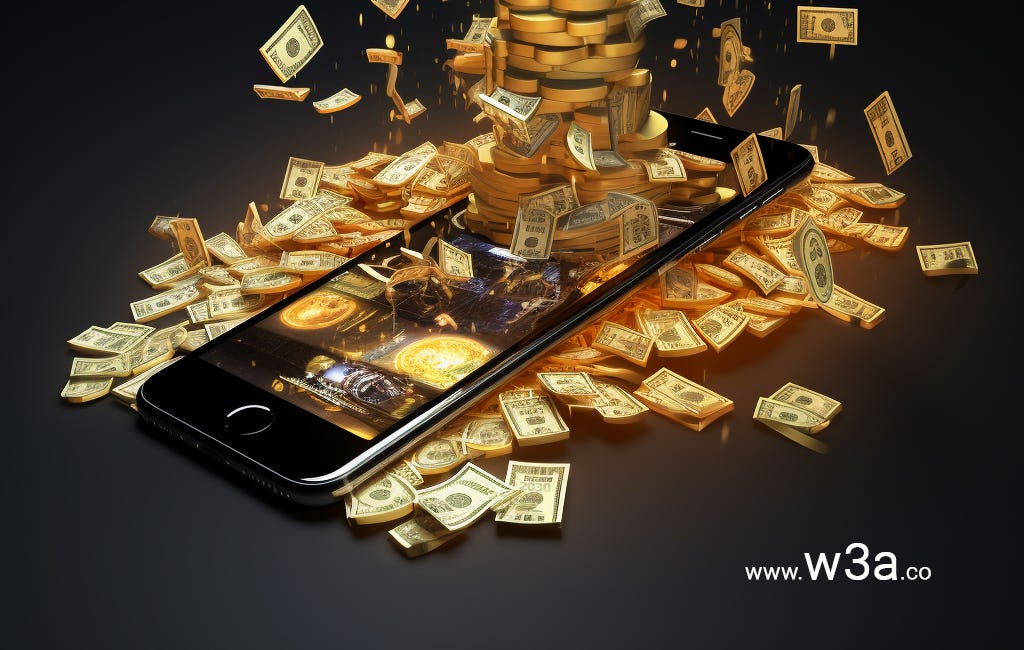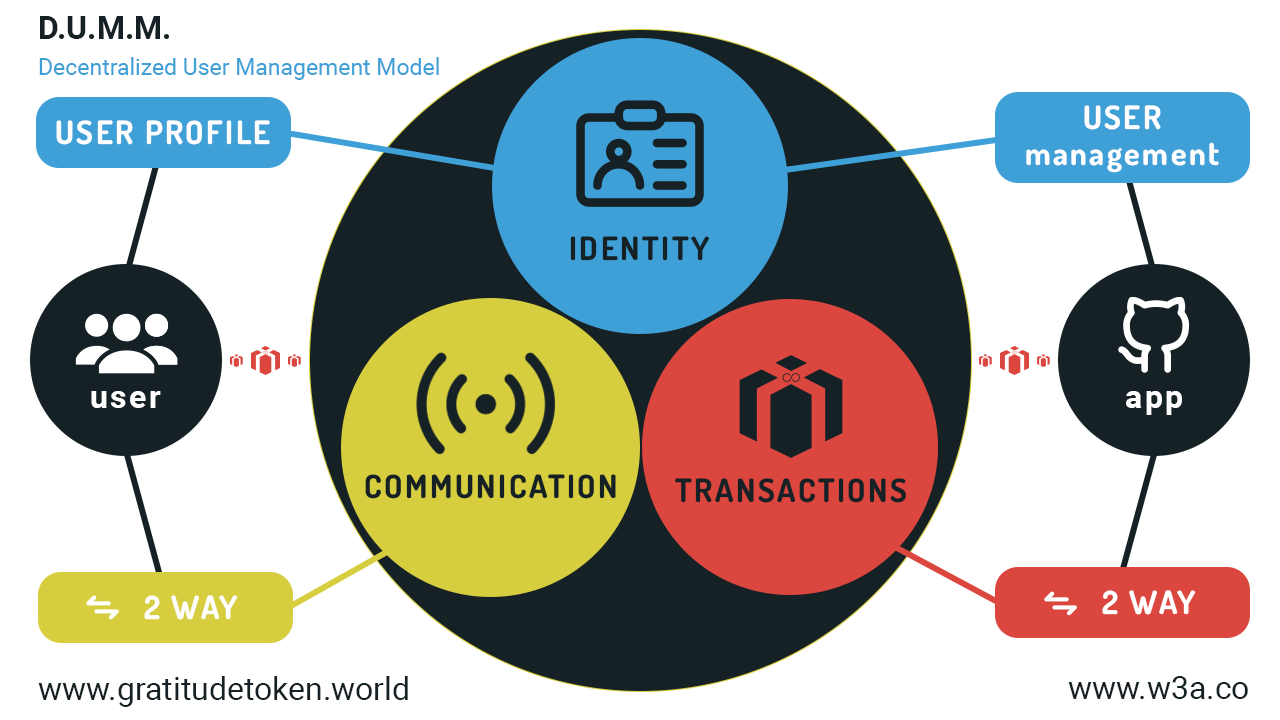Where is blockchain and crypto now?
And where is it all going?
Overview
Here’s a quick overview of the current situation for blockchain and cryptocurrency in the world. There are over 30K blockchain and crypto projects listed on the biggest index in the world: coinmarketcap.com
Out of these 30K projects listed over time, more than 90% of them were created as tests, jokes, copycats, rug-pulls and outright scams.
Less than 10% started with good intentions but didn’t know what they were doing and failed in spectacular ways, leaving investors with low confidence in the crypto markets and in anything related to the blockchain and crypto industry.
For these 10%, the first and most fatal mistake was to not actually have a real tokenomics or sustainable business model. Investors that put their money in these projects failed to foresee how they had no sustainable monetary policy/strategy or tokenomics, among other red flags.
In these projects, you will always see the tokenomics starting with the usual pie chart / diagram which they stole from Google Images:
20% team, 20% marketing, 20% development, etc… percentages may vary from project to project, but the lack of an actual sustainable model is a constant.
An arbitrary allocation of coins/tokens for different purposes is not an actual strategy. This is not tokenomics, this is just a superficial promise that guarantees nothing.
They all rely on “Perceived value” created through manipulative advertising. No real utility created, no innovation, no value added for anyone.
These projects usually plan their exit very early, rely on nothing but marketing and hype, working hard to create FOMO and get traction, making their exit, slowly pulling out from working on the project anymore. Keeping only a few updates now and then for a few years, to maintain appearances, until investors give up any hope of seeing any recovery.
The only reason they had any bull run is that they rode on the back of volatile, manipulated pairs like the big guys: BTC, ETH and others. And when the big boys came down, their altcoin price got even lower since they had no real utility or liquidity/assets for backing the coins/tokens they distributed to investors.
By the time retail investors figured out what happened, founders are usually long gone with their money.
Even if they had the best of intentions for the project, not spending more effort on tokenomics is like an intentional setup for self-sabotage. You either allocate too much for the team or you create whales in private sales before listing.
After the staking/vesting period expires for either founders / core team members, either for early private investors, these whales start to sell their coins/tokens, putting constant negative pressure on the price as they rush for the door, not knowing if any of the other whales holding those big percentages of the supply will crash the market before they get a chance to sell. So a rat race begins, sabotaging the project by keeping long term negative pressure on the price.
Out of this less than 10%, even less than 1% were more serious projects. Where are they today?
Honestly, I’m not sure if there are 100 projects that are actually trying to come up with something new, some innovation, some new utility or business model. Most of them are copycats and most are copies of Ethereum blockchain which in our opinion is doomed, and they’re pretending to be more than Ethereum.
How hard is blockchain business today?
Extremely hard, this has to do not only with the current market sentiment, due to the bearish trend, but also with the level of education and awareness about what blockchain technology actually is. Most fail to understand cryptocurrency is not the same thing as the underlying technology. It’s like comparing a paint brush (blockchain) with a painting (a crypto currency) and saying: these are the same objects.
It’s even harder to talk about Web 3, which is also based on blockchain.
But just to set the record straight, blockchain is not crypto, rather crypto is one possibility, one possible application for blockchain technology which have seen important use cases in the accounting, finance and fundraising space, so far.
But just as a paintbrush and paint can be used to create an infinite number of art pieces, or you can use it to store and transmit information, to create signs, to bring color to your environment and much more. Same goes for a screwdriver and screws, it’s not just a specific tool for a specific job, it can be used to design and hold together many useful products and services.
Blockchain is a technology that allows us human beings to store and access digital information in a new way. A way that brings many advantages which were not possible before, a way that will completely transform how we look at digital information, value, the internet, society and the entire universe.
Or as Gary Vaynerchuk used to say:
”Blockchain is the greatest technology in the history of life!”
Most people fail to support real uses cases though. Mostly because in a pioneering space, real use cases are a rare find, but also because they invest in projects they don’t really understand, just because there is a lot of hype around them, making emotional decisions, without really analyzing the project themselves. They’re listening to the advice of friends, friends that usually are vested in the project they recommend and who often aren’t experienced with investing or making profit from investments, but they want to see the project they recommended succeed, to protect their investment, even if they themselves are not sure it will succeed.
All that being said, it’s extremely hard to create a working business related to blockchain today, at the beginning of Web 3.
The world is not yet convinced of the advantages and benefits of using blockchain. Well, except for Generation Z, they know the drill and more. That means that it will take another 5 to 10 years, for blockchain to get more adoption.
There are still big opportunities in blockchain and Web 3, first mover opportunities, chances to find the right recipe, the right tokenomics or business model, and to perfect the technology so that it can get mass adoption.
We believe, just like Play2Earn and Move2Earn, any human activity will have a winning recipe, a self-balancing economy that is able to bring their users a lot of value and utility with business models that were not possible using traditional financial systems and traditional business models.
We are working on delivering one of the first dApps that promise just that, through decentralizing advertising with a User-2-User system that employs what we call Share2Earn and Like2Give. Also using a new business model called NPPoS (Non Profit Proof of Stake). The platform and dApp is called BiiP.world - and you can subscribe to the waiting list early on.
New business models
We are completely relying on the web to store value and transact it among ourselves today as a species. Even money is digital information today. More than 98% of all fiat money in the world with no backing, like (Euro, Dollars, Pounds, etc) is just numbers in old, centralized, unsecure databases.
There are about 15 business models or monetization models that appeared over time since we are using the web, it took about 3 decades for them to be enabled gradually by new technologies that were mass adopted in different degrees. Read about them in a previous article:
What is your model of business?
This is a question many investors and entrepreneurs ask us and probably the most essential question being asked by any investor in any startup pitch. It’s that fine balance that needs to be achieved in order to have a successful business. How much do I take from my client and how much do I give in return?
Blockchain has the potential to add many more business models to the list, but so far, very few have potential to scale and get mass adopted, one of the ones that does make economic sense is created by the Gratitude Token World team and explained in the article above.
Cryptocurrency wise, not even Bitcoin and ETH, having had a first mover advantage, creating a “Network effect” has found a way to be distributed as uniformly as possible to as many people as possible, creating stability and mass adoption.
None of these coins and tokens have a real distribution strategy that could work.
Advertising doesn’t work anymore for crypto, it’s restricted and forbidden on Web 2 platforms. Airdrops is not a distribution strategy, it’s a red flag. Projects that do the airdrop with most of the supply or a big chunk of it have no idea what they are doing, putting coins in wallets that will probably never use it or are abandoned is a very bad strategy. Just because 1M wallets have your coin and you can use this number in pitches to VCs doesn’t mean the wallet owners will actually use it or be aware of it.
Technology Mass Adoption Issues
Since the consensus algorithms PoW (Proof of Work) and PoS (Proof of Stake) were released, first one by Bitcoin and the second by Ethereum, there have been very few innovations in blockchain, and not enough problems fixed with the technology to make it possible to scale it fast, to get mass adopted.
Technology wise, we have a lot of blockchain projects that are unlikely to recover after the last market correction, so development slowed down drastically or stopped completely. I mean, there are really fast blockchains now, but they don’t have smart contracts, there are file storage blockchains now, but they are too slow and expensive and can’t compete with centralized cloud storage.
Here are the few innovations that appeared after Bitcoin.
Smart Contracts and Token Standards - popularized by Ethereum, but developed further by many others in better ways.
NFTs - are totally not there yet as a technology, the NFTs that we have today are just references to external centralized resources. Basically they contain an ID and a link to a file like an image, sound, video. This is not what decentralization and web 3 is about, this is faking utility.
Don’t get me wrong, NFT is a great technology if implemented correctly, but for over 90% of all NFTs out there, as long as you don’t store the file of each NFT on the blockchain where only you can access and give access to, so if your NFT is a link that can be accessed by anyone, it means you don’t really own it, so what’s the utility?
Now, there are still a lot of issues that need to be fixed and most projects are just not there yet.
Here are the obstacles creating friction between user and adoption that need to be resolved (to be available):
Advanced and user friendly blockchain explorer that can help people easily track any activity on the blockchain, good for developers, average users, law enforcement, accountants, etc.
Simple wallet that can manage all your accounts and authorize blockchain actions
SDKs and APIs to easily work with the blockchain and integrate them into any web app, making the app into a dApp or a web 3 app.
Web Authentication using the blockchain account - make the interaction with the blockchain possible from any web system.
Get rid of the complex address like 0xb794f5ea0ba39494ce839613fffba74279579268 which no human can read or transmit, only copy paste can - and replace this with universal unique usernames as identifiers, like: lucian123 - even your grandparents can read and transmit this type of identifier.
Feeless transactions for the end user (most users are confused when they have to own another coin in order to buy or transfer a token, blockchain has no real value for the end user, if transactions are not free and instant).
Speed, at least 4K TPS with instant finality (~1s finality)
Popular programming languages support for smart contracts, like Typescript and C++ - making development cheap, easy and fast.
Optional - Zero Knowledge proof KYC LVL 1 - On chain
Ability to store more than just transactions on the blockchain account (most blockchains allow to store some memos or some small strings in Smart Contracts, but not much) - we need to store more, at least 5MB for each account.
What if someone already solved these problems?
It was a surprize for us too, but what if I told you, that there is a blockchain which has solved all of these issues already? I’m talking about XPR network, the former Proton chain.
Gratitude Token World almost didn’t happen, because after a month of intense research done over a year ago, where we talked to core teams of top blockchain projects, none of them had these issues addressed. Right before giving up, somehow, Proton chain (now XPR network) came out of nowhere, like a miracle, and our project was now possible.
Given XPR network is a fork from EOS, built by the great Dan Larimer, it has 10% more juicy improvements compared to EOS and has many more features planned for the ecosystem running on it, XPR network is the most actively developed blockchain in 2023, based on our research.
So we are working with this blockchain as our layer 0 and we are adding another layer of interconnected smart contracts on it that we call BiiP (Biospheric Identity Internet Protocol) - this protocol is a revolutionary use case, a free but powerful tool that will allow for users to authenticate with their blockchain username, own and manage their personal information and funds in new ways that were not possible before. It will empower users to become their own bank and manager for all their web accounts, having user management features and transaction/payments features, all without passwords, fully decentralized, thus unhackable, contractless, permissionless, no need for email or SIM card number. We are going beyond Web 2 centralized authentication and we are doing it based on our new DUMM:
The team has identified 3 essential needs/requirements for any web project of any business/community, both today and also in the age of Web 3 and IoT (Internet of Things):
Identity/User management
2way communication
2way financial transactions
Learn more about the revolutionary open source BiiP in the white paper or invest and get a share of GRAT tokens, supporting it’s development, on Indiegogo.
Join the Movement!
Are you ready to be at the forefront of the digital revolution? Subscribe to our newsletter and become a part of the Web 3 Ambassadors community! Stay informed about the latest insights, innovations, and trends shaping the decentralized future.
But why keep all this transformative knowledge to yourself? Share this edition with at least one friend, and let's expand the circle of Web 3 Ambassadors. Together, we can empower more individuals to embrace the potential of Web 3.0 and shape a more decentralized, inclusive digital landscape.
Subscribe now and spread the vision of a Web 3 future!
Write for Web 3 Ambassadors
If you like writing about web 3, decentralization, blockchain, crypto, open source software and new fairer models of business, and you want your articles published in our blog, get in touch with us at [email protected]





